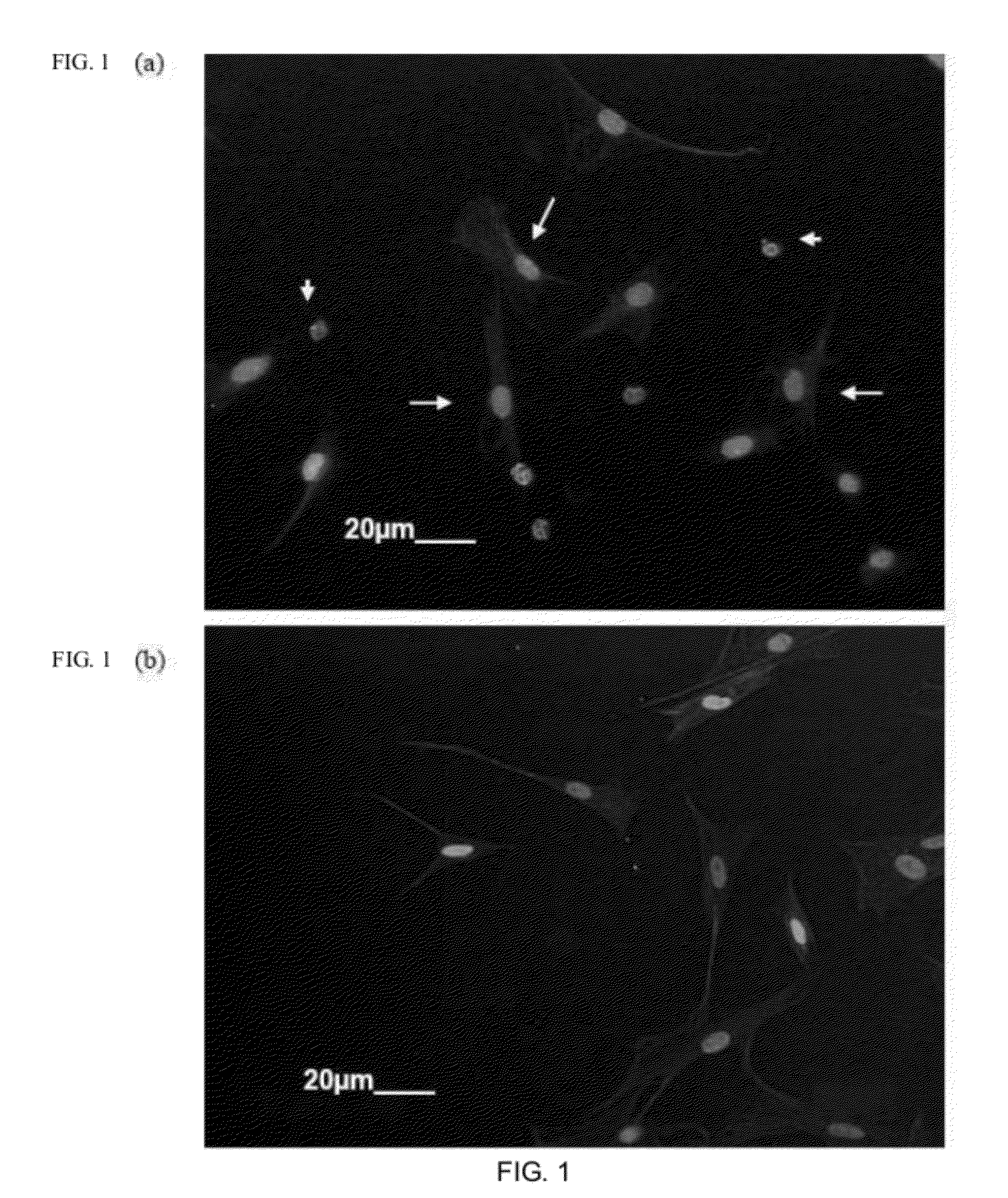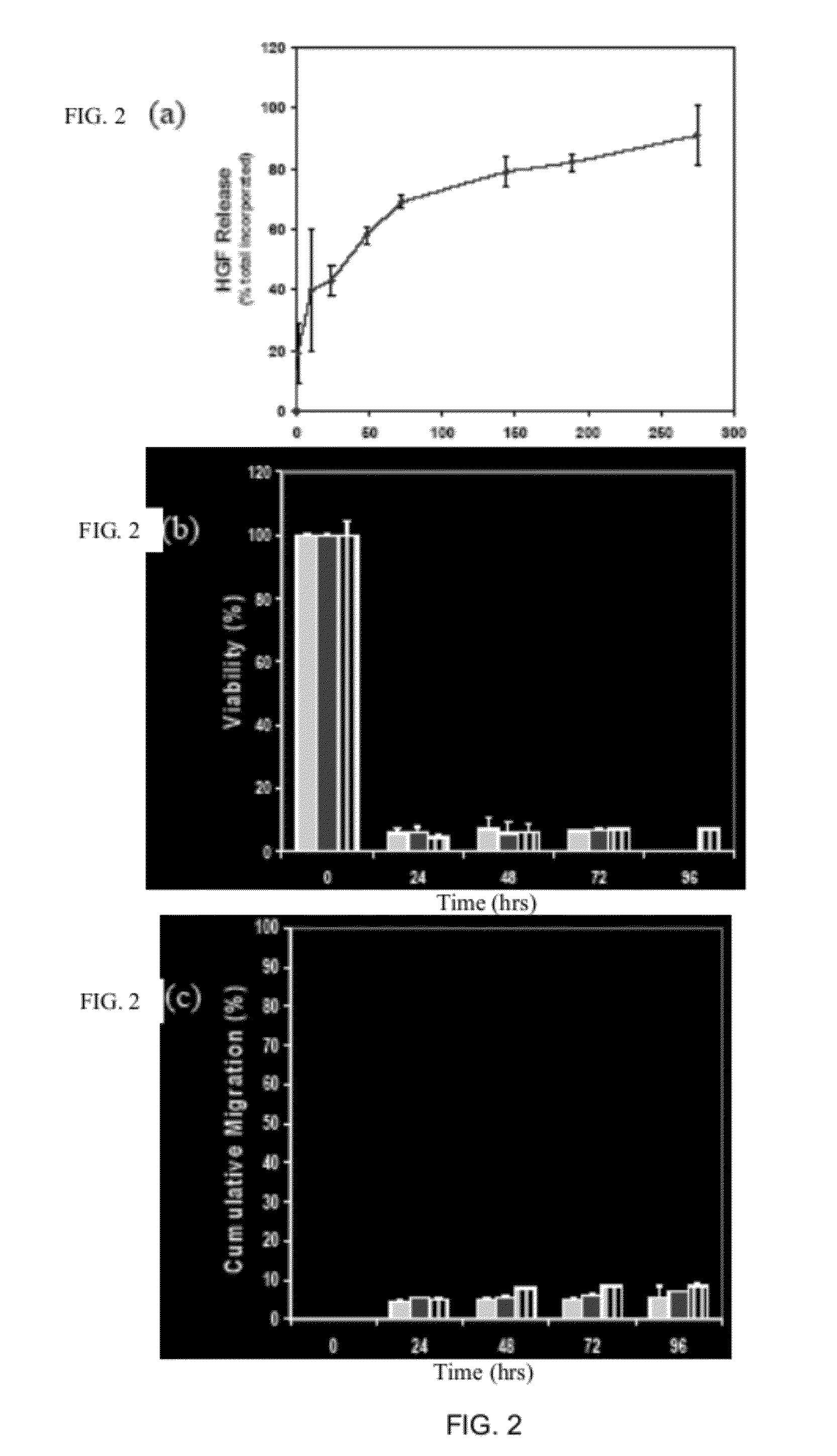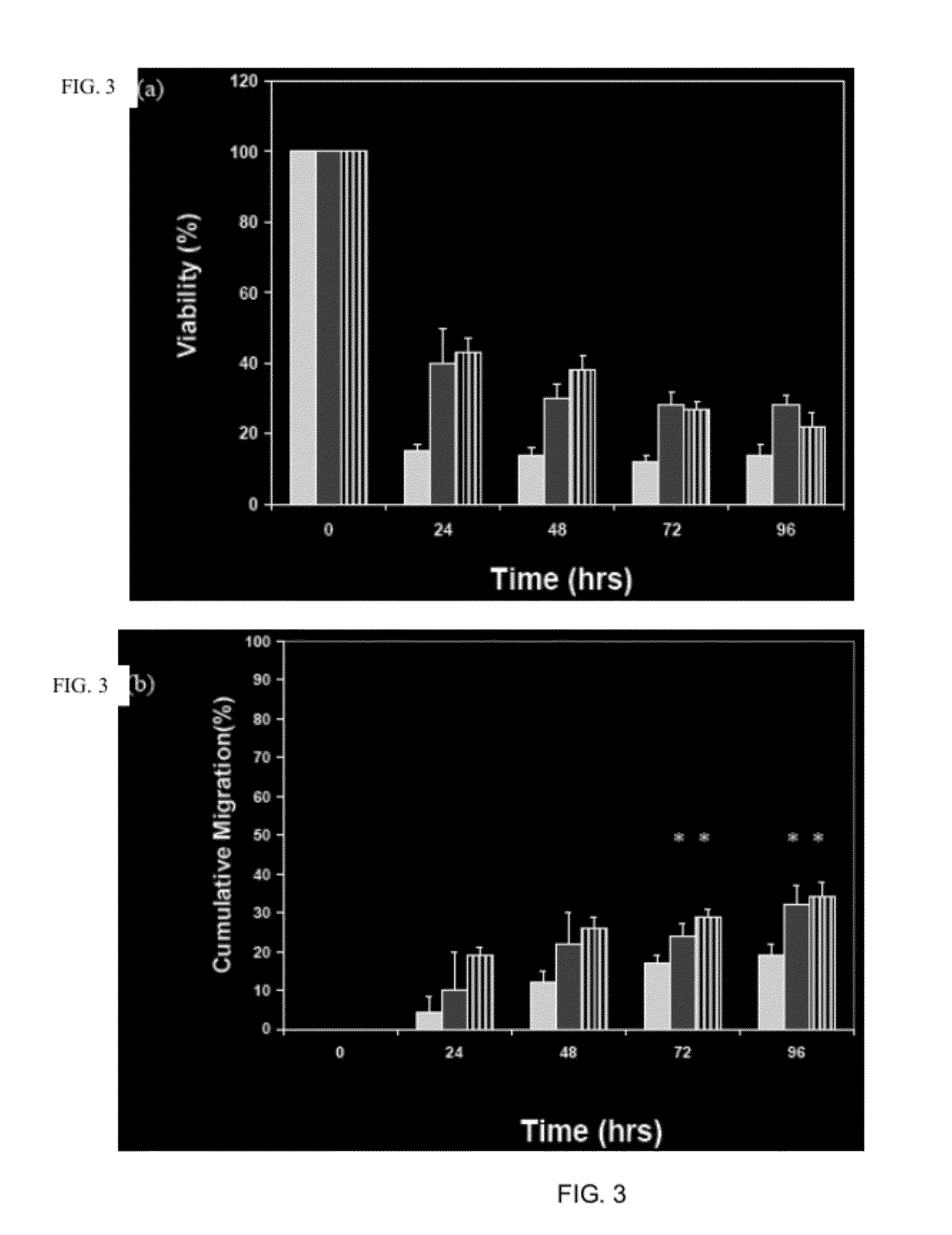Scaffolds For Cell Transplantation
a cell transplantation and scaffolding technology, applied in the field of scaffolds for cell transplantation, can solve the problems of limited success of cell transplantation in musculoskeletal regenerative medicine, net loss of muscle mass and resulting strength, and degenerative conditions such as diabetes, so as to promote cell-based maintenance of tissue structure and function, promote cell-based migration, and promote the effect of tissue destruction
- Summary
- Abstract
- Description
- Claims
- Application Information
AI Technical Summary
Benefits of technology
Problems solved by technology
Method used
Image
Examples
example 1
Designing Scaffolds to Enhance Transplanted Myoblasts Survival and Myogenesis
[0117]Myoblast transplantation is currently limited by poor survival and integration of cells into host musculature. Transplantation systems that enhance the viability of the cells and induce their outward migration to populate injured muscle enhances the success of this approach to muscle regeneration. Enriched populations of primary myoblasts were seeded onto delivery vehicles formed from alginate, and the role of vehicle design and local growth factor delivery in cell survival and migration were examined. Only 5+ / −2.5%, of cells seeded into nanoporous alginate gels survived for 24 hrs, and only 4+ / −0.5% migrated out of the gels. Coupling cell adhesion peptides (e.g., G4RGDSP) to the alginate prior to gelling slightly increased the viability of cells within the scaffold to 16+ / −1.4%, and outward migration to 6+ / −1%. However, processing peptide-modified alginate gels to yield macroporous scaffolds, in comb...
example 2
Niche Scaffolds Promote Muscle Regeneration Using Transplanted Cells
[0144]Transplanting myoblasts within synthetic niches that maintain viability, prevent terminal differentiation, and promote outward migration significantly enhances their repopulation and regeneration of damaged host muscle. Myoblasts were expanded in culture, and delivered to tibialis anterior muscle laceration sites in mice by direct injection into muscle, transplantation on a macroporous delivery vehicle releasing factors that induce myoblast activation and migration (HGF and FGF), or transplantation on materials lacking factor release. Controls included the implantation of blank scaffolds, and scaffolds releasing factors without cells. Injected cells in the absence of a scaffold demonstrated a limited repopulation of damaged muscle, and led to a slight improvement in muscle regeneration. Delivery of cells on scaffolds that did not promote migration resulted in no improvement in muscle regeneration. Strikingly, ...
example 3
Treatment Skin Wounds
[0163]In the context of a skin defect, the goals of the therapy are dictated by the type of wound (e.g., acute burn, revision of scar, or chronic ulcer) and size of the wound. In the case of a small chronic ulcer, the objective is closure of the wound by regeneration of the dermis. The epidermis regenerates via migration of host keratinocytes from the adjacent epidermis. For large wounds, keratinocytes, optimally autologous, are provided by the device to promote regeneration of the epidermis. Cells are loaded into a scaffold material that is placed directly over the wound site, e.g., a scaffold structure in the form of a bandage. The material provides a stream of appropriate cells to promote regeneration. For dermal regeneration, fibroblasts cells are used to seed the device, and these cells are either autologous (biopsy taken from another location and expanded before transplantation) or allogeneic. Advantages of autologous cells include a decreased risk of dise...
PUM
 Login to View More
Login to View More Abstract
Description
Claims
Application Information
 Login to View More
Login to View More - R&D
- Intellectual Property
- Life Sciences
- Materials
- Tech Scout
- Unparalleled Data Quality
- Higher Quality Content
- 60% Fewer Hallucinations
Browse by: Latest US Patents, China's latest patents, Technical Efficacy Thesaurus, Application Domain, Technology Topic, Popular Technical Reports.
© 2025 PatSnap. All rights reserved.Legal|Privacy policy|Modern Slavery Act Transparency Statement|Sitemap|About US| Contact US: help@patsnap.com



